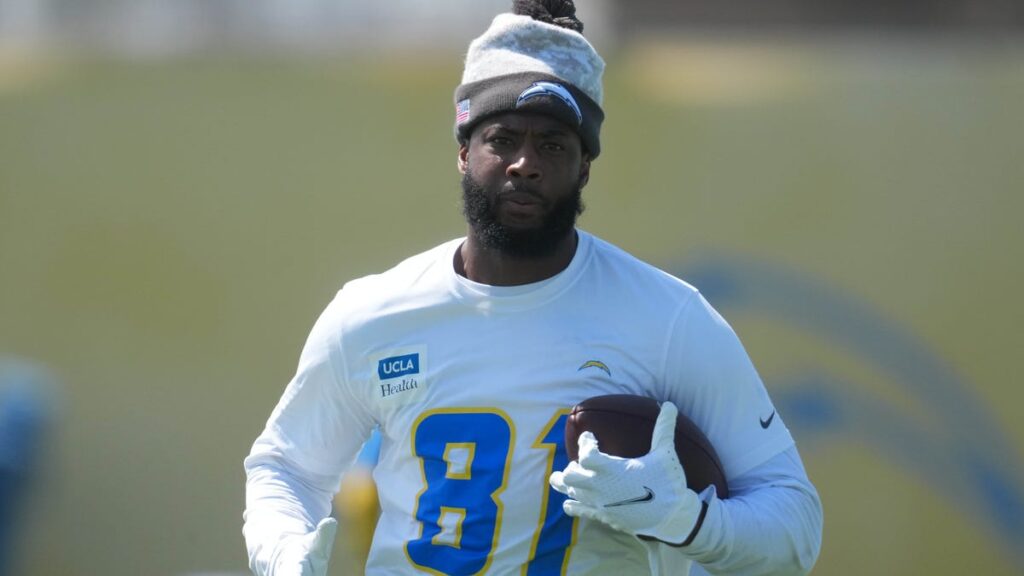The Chargers open training camp in July ahead of their Hall of Fame Game appearance against the Lions on July 31, but the roster heading into the preseason is already set after free agency, the draft, and undrafted free agency this spring. With a number of new additions and changes to the depth chart, how does the roster stack up compared to what Los Angeles put on the field for Jim Harbaugh’s first season at the helm?
Quarterback: Same
The only change the Chargers made to the quarterback position this offseason was swapping third-stringer Easton Stick for former first-round pick Trey Lance as the man behind Justin Herbert and Taylor Heinicke. LA will hope to see less of Heinicke this season, despite his limited snap count numbers in 2024, they all came because of injuries to Herbert throughout the earlier portions of the season.
Running back: Better
J.K. Dobbins was great when healthy last year, but missed four games with a knee injury and thus missed his opportunity to become the Chargers’ first 1,000-yard rusher since Melvin Gordon in 2017. Fellow former Raven Gus Edwards was largely ineffective after an offseason ankle procedure. Los Angeles replaced them with Najee Harris and No. 22 overall draft pick Omarion Hampton this offseason. While Harris is not as explosive as a runner as Dobbins showed to be at times last season, he’s never missed an NFL game and has cleared 1,000 yards in all four seasons as a pro. Hampton has a bit more juice and is expected to be a major contributor alongside Harris immediately.
Wide Receiver: Better
It’s hard for the wide receiver group to look worse than last year’s. While Ladd McConkey broke out as a rookie and Quentin Johnston improved, the unit was still among the worst in the league for most of the season. Free agent signing DJ Chark only had five receptions all season and is no longer on the roster. Joshua Palmer left for Buffalo, while special-teams ace Simi Fehoko packed his bags for Arizona.
Mike Williams is back to mentor second-round draft pick Tre Harris at the X spot. That allows Johnston to play more of a pure Z role, where rookie KeAndre Lambert-Smith may also factor into the equation. It’s a more natural distribution of roles that doesn’t rely as heavily on Johnston developing or a free agent rental (Chark or Williams) staying healthy and making a big difference.
Tight End: Better
Hayden Hurst and Stone Smartt are out, with Tyler Conklin and Oronde Gadsden II substituting as replacements. Those two join Will Dissly in the position room, with Conklin and Dissly expected to take a more equal split of the snaps than Dissly and Hurst did last season due to injuries. Gadsden will play a similar role at TE3 as Smartt did – a pass-catching threat with lesser blocking upside – but also has more room to grow as a younger player without as much pressure to perform right away.
Offensive Line: Better
There are still a lot of questions about the Chargers’ offensive line, namely, who the starters at left guard and center will be in 2025. But even the singular addition of Mekhi Becton, who will start at right guard, is an improvement over Los Angeles’ unit from last season, which started Trey Pipkins in that spot and had Zion Johnson and Bradley Bozeman in the other two interior spots. Pipkins, Johnson, Bozeman, and former Raiders center Andre James are competing for those final two starting spots, and that much adversity through training camp should bring out the best in all four men. Johnson has been specifically working at the center in OTAs and has been mentioned by Harbaugh and general manager Joe Hortiz as a player they’re still confident in.
#Rating #Chargers #offensive #positional #units

